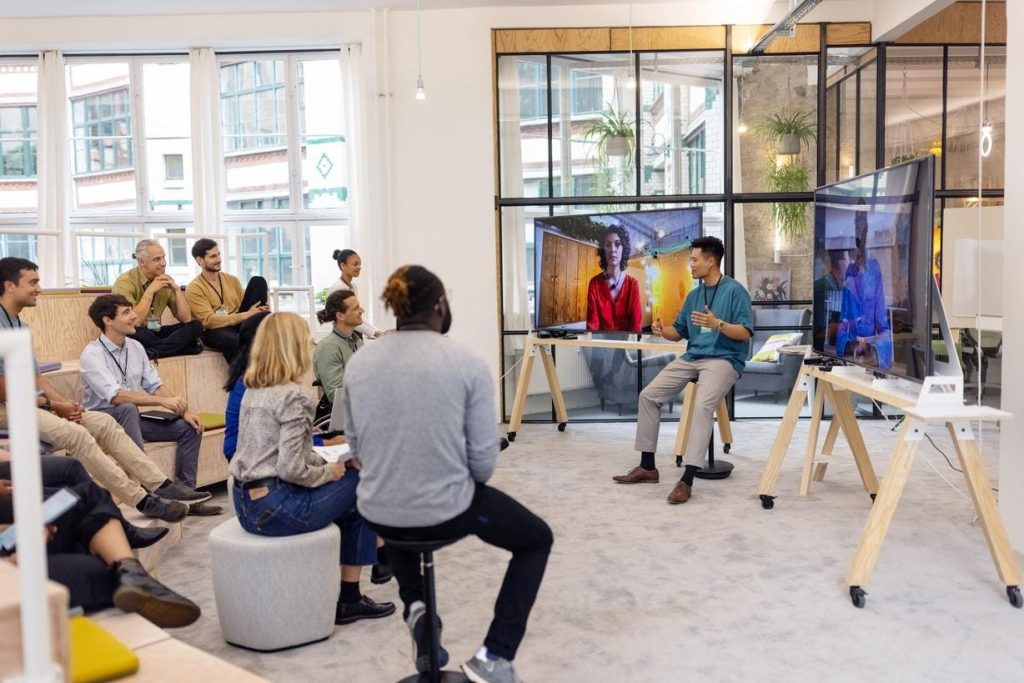Elise Awwad is president and CEO of DeVry University.
AI and digital transformation, fluctuating standards on remote versus in-office jobs and shifting employee expectations have ushered in a new era of workforce development needs. While countless organizations are offering professional learning in the workplace, many employees in the United States are not engaging in these learning opportunities at the level that is needed. Worse yet, those who are paying the biggest price in terms of decreased access to and participation in upskilling represent some of our most marginalized populations in the workforce: women and people of color. In sum, what the nation is experiencing is a dire need to upskill a workforce that will help the economy thrive and advance careers for all workers.
The Challenges Preventing Upskilling Success And Upward Mobility
Upskilling is not new. Many organizations are already working to provide professional learning and development opportunities as they can increase productivity and career satisfaction and allow businesses to advance amid rapid economic and technological change. Most employers and employees also view it as essential for advancement.
But despite nearly eight in 10 employers making upskilling resources available, employers estimate that only about half of employees actually use them, according to a new report sponsored by my organization. Why is this? The answer is not clear-cut, with employers and employees offering contradicting perspectives.
Employers cite a lack of interest from employees in participating in upskilling—even though employees view it as essential for their future career development. Meanwhile, employees are dissatisfied with the lack of financial support from their company for continuous learning opportunities—even though most employers say they offer company-paid upskilling programs. Employees also cite a lack of time and overriding family priorities as obstacles to participation. Simultaneously, there is a disconnect between how employers and workers communicate the skills they need for the future. Workers say they value hard skills and credentials, while employers say they value softer, more durable skills. But the reality is these are not mutually exclusive, as hard skills development curricula often teach durable skills as well.
All of this means employers must do more to engage their talent and motivate them to take advantage of these critical learning opportunities or risk falling behind. This is especially true for diverse employees who, according to the research, believe they are navigating systemic barriers preventing their participation in upskilling.
The Responsibility To Create Equity In Upskilling
With skills development in the workplace being a key to career advancement and upward mobility, employers and educators undoubtedly have the power to help advance the careers of diverse employees through upskilling. However, the same report on upskilling found that only about half of women say they have access to upskilling, compared to nearly three-quarters of their male counterparts. And for people of color, the barriers are all too real: 37% of Black, Hispanic and AAPI workers agree that workplace bias and discrimination present obstacles to their own upskilling goals.
Low engagement in skills development from all employees and unequal access to upskilling for women and people of color can create negative ripple effects for all parties. It reduces opportunities for a more diverse workforce, increases untapped talent potential and limits an organization’s ability to keep pace with an ever-evolving workforce.
Taking Action To Catalyze Skills Development
Every industry, including education, must lead the charge in ensuring upskilling programs are equitable, accessible and meet the expectations of both employers and employees. Workers need tailored and flexible professional development opportunities to ensure they acquire the necessary skills for career advancement and to facilitate a balance between work, life and learning. Additionally, there is also an opportunity for organizations to look more closely at the overlap between the skills they prioritize for business advancement and the skills employees prioritize for career advancement to build a consensus and increase engagement in upskilling programs.
Employers can avoid a one-dimensional approach to defining and implementing upskilling opportunities by:
Understanding Needs Through Inclusive Dialogue
Ask employees about their goals and opinions through engagement surveys. This can help you to identify the most sought-after knowledge and skills, understand needs and define objectives based on shared knowledge gaps. In turn, this can help employees feel engaged and motivated to achieve their development goals.
Offering Flexibility
Employers can make professional development convenient for employees by blending opportunities into the workday. Sessions could be offered in the mornings, at lunchtime or in the evenings. For added flexibility, keep in mind that employee training is complex and time-consuming, especially for larger groups. Therefore, continuous learning and time can be best supported with the right modality and pacing.
Instituting A Robust Feedback Mechanism
Timely, transparent and constructive feedback is essential for ensuring that learning is being supported and achieved. Make sure the upskilling program incorporates both individual and group learning initiatives, allowing opportunities for employees to absorb, reflect and apply new knowledge and skills. It’s also important to help employees measure their knowledge growth and performance and pinpoint areas for improvement to support effective and continuous learning.
The answer to the upskilling challenge is not offering more resources; it is offering the right development opportunities to the right people and giving them the flexibility to succeed. Ultimately, offering skills development programs that are equitable and match employer and employee needs will help provide a path forward for a positive workforce, business and economic momentum.
As the president and CEO of an educational institution that is constantly seeking out new ways to support learning and development for all types of students—including those already in the workforce—this data provides us with a clear call to action to address barriers and support organizational success and individual career advancement. Addressing these barriers can help us to create a resilient workforce and maintain national competitiveness, irrespective of future changes.
Forbes Business Council is the foremost growth and networking organization for business owners and leaders. Do I qualify?
Read the full article here










